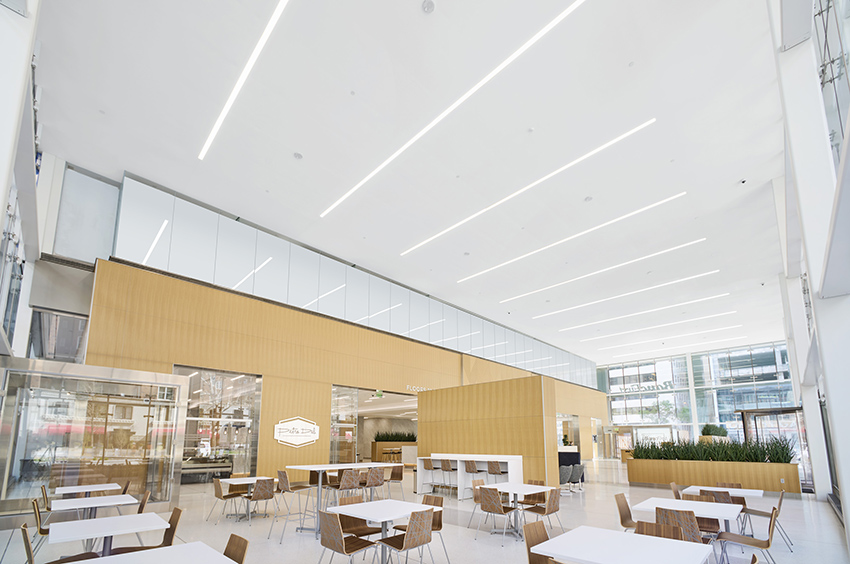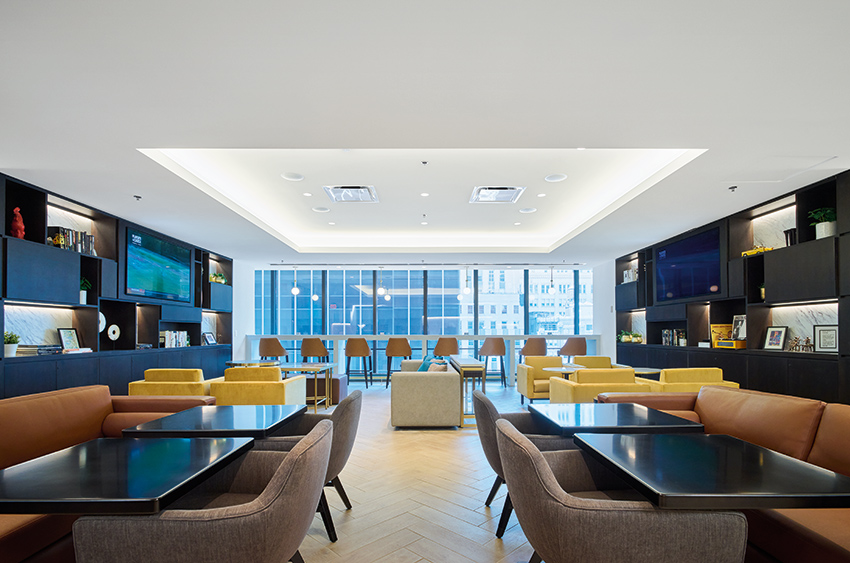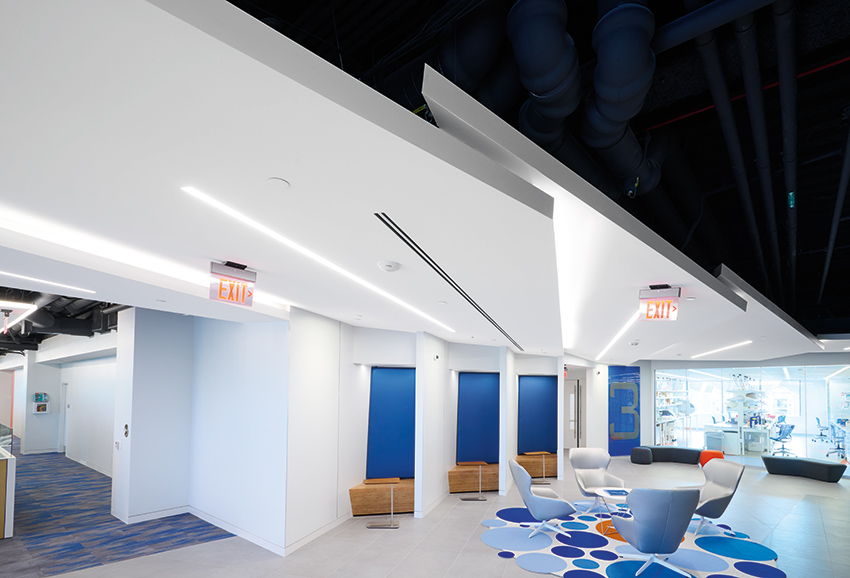How to Specify Seamless Acoustical Ceilings
 1 AIA LU/HSW; 1 IDCEC CEU/HSW; 1 GBCI CE Hour; 0.1 ICC CEU; 0.1 IACET CEU*; 1 AIBD P-CE; AAA 1 Structured Learning Hour; This course can be self-reported to the AANB, as per their CE Guidelines; AAPEI 1 Structured Learning Hour; This course can be self-reported to the AIBC, as per their CE Guidelines.; MAA 1 Structured Learning Hour; This course can be self-reported to the NLAA.; This course can be self-reported to the NSAA; NWTAA 1 Structured Learning Hour; OAA 1 Learning Hour; SAA 1 Hour of Core Learning
1 AIA LU/HSW; 1 IDCEC CEU/HSW; 1 GBCI CE Hour; 0.1 ICC CEU; 0.1 IACET CEU*; 1 AIBD P-CE; AAA 1 Structured Learning Hour; This course can be self-reported to the AANB, as per their CE Guidelines; AAPEI 1 Structured Learning Hour; This course can be self-reported to the AIBC, as per their CE Guidelines.; MAA 1 Structured Learning Hour; This course can be self-reported to the NLAA.; This course can be self-reported to the NSAA; NWTAA 1 Structured Learning Hour; OAA 1 Learning Hour; SAA 1 Hour of Core Learning
Learning Objectives:
- Discuss the challenge for architects to strike a balance between aesthetics, cost, and acoustic performance for the wellbeing of the occupant.
- Recognize the evolution and current options for smooth surface ceilings that improve acoustic performance.
- Compare performance, cost, and installation methods of seamless acoustical ceilings to ensure a healthy environment for occupants.
- List common misperceptions associated with seamless acoustical ceiling products.
This course is part of the Acoustics Academy
Seamless acoustical drywall alternative ceiling installation begins with the installation of a compatible DGS, which is squared within the module. The panels are installed next—parallel to the main beams—followed by the joint compound. Before spraying the acoustically transparent finish, inspect the ceiling for defects that need repair. Once that’s done, you will need to spray with equipment that can atomize the finish. This will allow sound to pass through the finish into the board to be absorbed.
The biggest advantage of this acoustical drywall alternative is that it is a one-layer system, and therefore costs less than acoustical plaster. There is a common misconception that great acoustical performance requires a two-layer system. In the case of a seamless acoustical drywall alternative system, only one layer is necessary at $25-$30 per square foot, which means a project can save time and money due to the lower cost of installation. It also can be patched or repaired, as needed.
As we’ve learned, the evolution of ceiling systems is driven by a desire for better efficiency and lower costs, while still providing high-performance features. Architecture has evolved over the years as architects and designers have come to understand the impact of design on health and well-being. Stucco and lath and plaster evolved into drywall. Two-layer acoustical systems have taken it a step further to achieve the once unheard of idea that clean monolithic lines and acoustics could be combined. The one-layer acoustical drywall alternative ceiling system is a next step in the aim for innovation, and a solution that helps to reduce material usage and installation cost while improving sustainability.
 Photo courtesy of Armstrong Ceiling and Wall Solutions
Photo courtesy of Armstrong Ceiling and Wall SolutionsA single-layer seamless acoustical drywall alternative is able to achieve the goal of indoor environmental quality in which acoustics and aesthetics are key to occupant health, safety, and well-being.
Indoor Environmental Quality For Occupant Well-Being
In the simplest of terms, indoor environmental quality (IEQ) is the quality of a building’s environment in relation to the health and well-being of its occupants. It includes design that keeps in mind elements such as air, light, acoustics, temperature, sustainable materials, and aesthetics. And as simple and obvious as these elements seem, when you start to think about the ripple effect of how they impact occupants in a building, it becomes clear how complex and crucial IEQ is to every human in every indoor space. The spaces we occupy have a critical effect on our physical and mental health. They influence the quality of the decisions we make, the way we feel, how we move in the world and interact with others, and how well we accomplish work and other daily tasks. In other words, spaces affect the way we experience our lives. And in the United States, where people spend about 90 percent of their time indoors, that impact is no small matter.
 Photo courtesy of Armstrong Ceiling and Wall Solutions
Photo courtesy of Armstrong Ceiling and Wall SolutionsIn offices and lobbies, acoustics are a key aspect of ceiling and wall systems in which the balance between in-room sound and room-to-room sound is important.
Indoor air quality (IAQ) has long been a focus in the architecture, engineering, and construction industries because it is critical to the U.S. Green Building Council's LEED green building rating system, which considers issues such as volatile organic compounds (VOCs) and other pollutants. Many construction projects strive for green building rating systems because they add value to their project, signal a commitment to sustainability and ethical construction, and keep designs on the cutting edge.
But the goal of IAQ is no longer enough. A holistic approach is now considered foundational to building design, which is why, over the last few decades, IEQ has become the gold standard. Beautiful, inviting public spaces designed to make people feel good is critical to the health, safety, and well-being of building occupants. This newer ceiling category—the seamless acoustical drywall alternative—accomplishes this goal. The following section delves into the importance of minimizing intruding noise by way of acoustic ceiling systems.
 Photo courtesy of Armstrong Ceiling and Wall Solutions
Photo courtesy of Armstrong Ceiling and Wall SolutionsThe Worcester Public Library in Massachusetts is an example of how a seamless acoustical drywall alternative combines function and design in a space where acoustics and visual artistry are both highly desired.
Why Acoustics Matter for the Occupant
Acoustics are an important aspect of ceiling and wall systems in which the balance between in-room sound (comfort and speech intelligibility) and room-to-room sound (isolation and speech privacy) is important. This impacts spaces such as open offices, college lecture halls, libraries, and boardrooms, as well as hotel lobbies and ballrooms that often hold conferences and other events.
It plays a key role in offices, for instance, where well-designed spaces allow workers to concentrate on the task at hand, which leads to better productivity. Poorly designed spaces, on the other hand, lead to distraction, discomfort, and dissatisfaction for workers, decreasing productivity in the office and even negatively affecting their lives outside the office. For employers, productivity is important to the design of a space because people are the biggest cost when it comes to running a business, and retention of happy, healthy talent is imperative.
In some cases, workplace noise can be such a hazard that workers suffer adverse health effects. According to the Institution of Occupational Safety and Health, the health effects can be caused by either a single exposure to very loud noise or exposure to raised levels of noise over long periods of time. The effects depend on many factors, such as pitch and sound pressure, and personal health qualities such as lifestyle, age, and genetics. But the negative results can include hearing loss, anxiety, irritation, increased blood pressure, and other physiological and mental health issues.
When comparing the acoustic qualities of seamless acoustic ceiling systems, Noise Reduction Coefficient (NRC) and Ceiling Attenuation Class (CAC) are two measurements to take into consideration.
NRC is the rating of how much sound a material can absorb. It is measured on a scale that ranges from 0.00 to 1.00. For example, an NRC of 0.00 means the product absorbs no sound, and an NRC of 0.80 means that 80 percent of the sound that hits the material is absorbed.
CAC is the rating of a ceiling system as a barrier to airborne sound transmission between adjacent closed spaces that share a common air plenum. The higher the CAC rating, the better the performance. CAC (for ceilings) and Sound Transmission Class (STC)(for walls) are the exact same value, the only difference is the specific path. Optimal design will “match” wall STC and ceiling CAC. For example, a wall or ceiling with an STC 40 and CAC 40 will reduce sound by approximately 40 decibels (dB) when it passes through a wall or ceiling assembly.
 Photo courtesy of Armstrong Ceiling and Wall Solutions
Photo courtesy of Armstrong Ceiling and Wall SolutionsThe seamless acoustical drywall alternative integrates well with a variety of lighting systems.












